Poetical Expression in the Terms of blade (under construction)
In Japanese sword field, we have been using many terms that indicate various
kind of appearances in the blade. Many of the terms are poetical word to
express each appearance. The words are elegant, but sometimes they bring
confusing to beginners.
In old days in Japan, sword lovers were literary person, rather than scientist.
They didn't make sword, but just appreciated. So the terms they created
were not by science. The words explain the blade appearance poetically.
Now, we will introduce some of such poetical terms that tend to confuse
people.
Sunagashi = sands flowing (Suna = sands, Nagashi = flowing)
A sweeping pattern of nie particles around the hamon line. It comes from
the relation between hardening effect and layer.
Some person said that smith should put sands into the tempering clay to
get such an appearance, but you can laugh it.
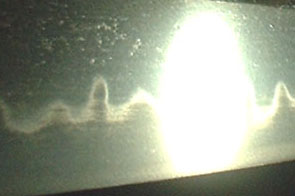
Kinsuji = gold strings (Kin = gold, Suji = strings)
A strand made of bright nie particles in the hamon. It is not made of gold.
Once, there was a rich man who came to a forge and put his gold coins on
the folding steel to get kinsuji into the blade he ordered. This project
was a business of tricky smith to satisfy rich man. Later, the smith got
melt-down gold at the bottom of his forge.
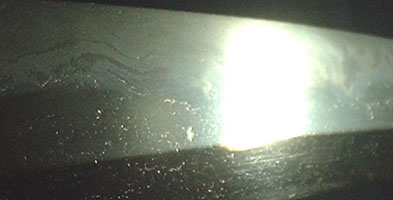
Ginsuji = silver strings (Gin = silver)
A kind of kinsuji, but not so bright. We can't distinguish kinsuji/ginsuji
clearly. It is just by personal feeling.
Secondary rich man .... his silver coins....??
Imozuru = potato runner (Imo = sweet potato, Zuru or Tsuru = runner)
A kind of kinsuji, but a little thick, long and dim. It seems running dully.
It is typical in blades in Satsuma province, and the province is famous
for sweet potato. The term includes some ridicule against Satsuma blades.
Imozuru on Satsuma blade
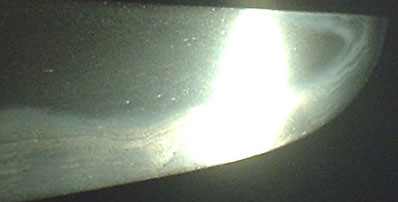
Inazuma = lightning
A kind of kinsuji that running sharply like lightning. No relation with
electricity.
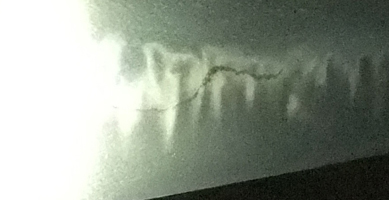
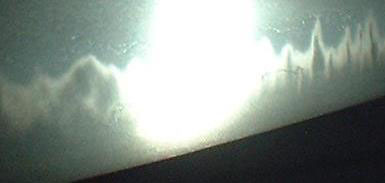
Yubashiri = hot water running (Yu = hot water, Bashiri or Hashiri = running)
Mass of nie particles running in blade surface.
It makes us imagine that hot water running on the surface breaking the
clay off at the hardening work. I am not sure if such work happens in the
water.
(=> Yari "Naohiro")
Mizukage = water shadow (Mizu = water, Kage = shadow)
A kind of utsuri that goes through the back about 45 degrees.
Some books say it is a mark of the water surface at the hardening work.
But it is not true. We have never seen such a deep tub for hardening work.
(=> Mizukage)
On tsurugi or yari, mizukage can appear from the both side. (=> Yari "Shimosaka")
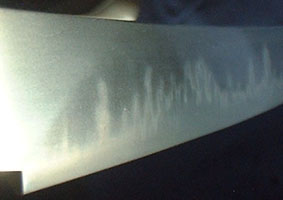
(=> Episodes by Kokaji, mizukage)
Home > Information, Blade > Poetical terms




